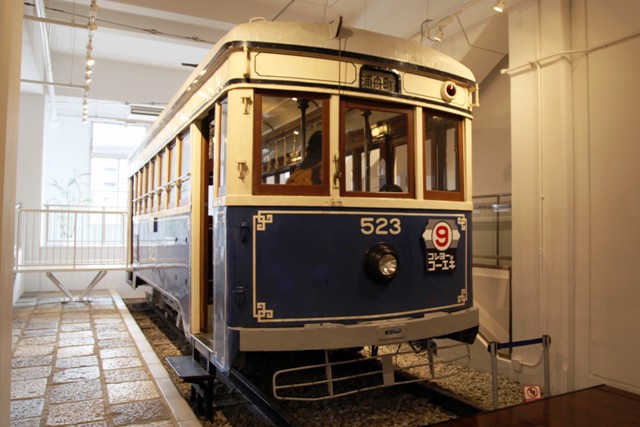Fujikyu is a local private railway company in Yamanashi Prefecture. It is known as the railway to the foot of Japan's highest mountain, Mt. Fuji (3,776 m above sea level). We can see many tourists visiting Mt. Fuji in the trains, but that is not everything.
There are many natural springs on the line. Specifically, the western part of Tsuru City is a local secret to visit. For instance, a beautiful natural spring named Reimei-suigen near Tohkaichiba station is famous among local people. A twin waterfall named Taro-daki and Jiro-daki near Higashikatsura station is also worth visiting. It is close to a beautiful wasabi (Japanese horseradish) field in a natural spring.
The best place, especially for rail fans, is Tahara-no-taki (Tahara waterfall) beside the rail track. We can see both the trains and the torrent of Katsura River there. When I visited there, a unique designed train, the Fuji-san Express, EMU 8000 series (ex-Odakyu 20000 series), was just passing by the waterfall. It was indeed a photogenic scene.
To get to Tahara-no-taki, the nearest station is Tsuru-bunka-daigaku (Tsuru University). On the way back home, I enjoyed taking train pictures at the station. I could shoot an ex-Keio train, the EMU 1200 series, named "Fuji-tozan-densha", passing through the station. The interior of this train looks like a living room. There are even bookshelves and showcases. During the trip, passengers can fully enjoy this "living room", and relax as if they are at home.
Tourists can find an unfailing resource on the Fujikyu line.
There are many natural springs on the line. Specifically, the western part of Tsuru City is a local secret to visit. For instance, a beautiful natural spring named Reimei-suigen near Tohkaichiba station is famous among local people. A twin waterfall named Taro-daki and Jiro-daki near Higashikatsura station is also worth visiting. It is close to a beautiful wasabi (Japanese horseradish) field in a natural spring.
The best place, especially for rail fans, is Tahara-no-taki (Tahara waterfall) beside the rail track. We can see both the trains and the torrent of Katsura River there. When I visited there, a unique designed train, the Fuji-san Express, EMU 8000 series (ex-Odakyu 20000 series), was just passing by the waterfall. It was indeed a photogenic scene.
To get to Tahara-no-taki, the nearest station is Tsuru-bunka-daigaku (Tsuru University). On the way back home, I enjoyed taking train pictures at the station. I could shoot an ex-Keio train, the EMU 1200 series, named "Fuji-tozan-densha", passing through the station. The interior of this train looks like a living room. There are even bookshelves and showcases. During the trip, passengers can fully enjoy this "living room", and relax as if they are at home.
Tourists can find an unfailing resource on the Fujikyu line.
EMU Fujikyu 8000 series, Fuji-san Express, passes by Tahara-no-taki waterfall
Official information about Fuji-san Express and Fuji-tozan-densha:
Official information abount Fuji-san Express (in Japanese):
Official information about Fuji-tozan-densha (in Japanese):



















